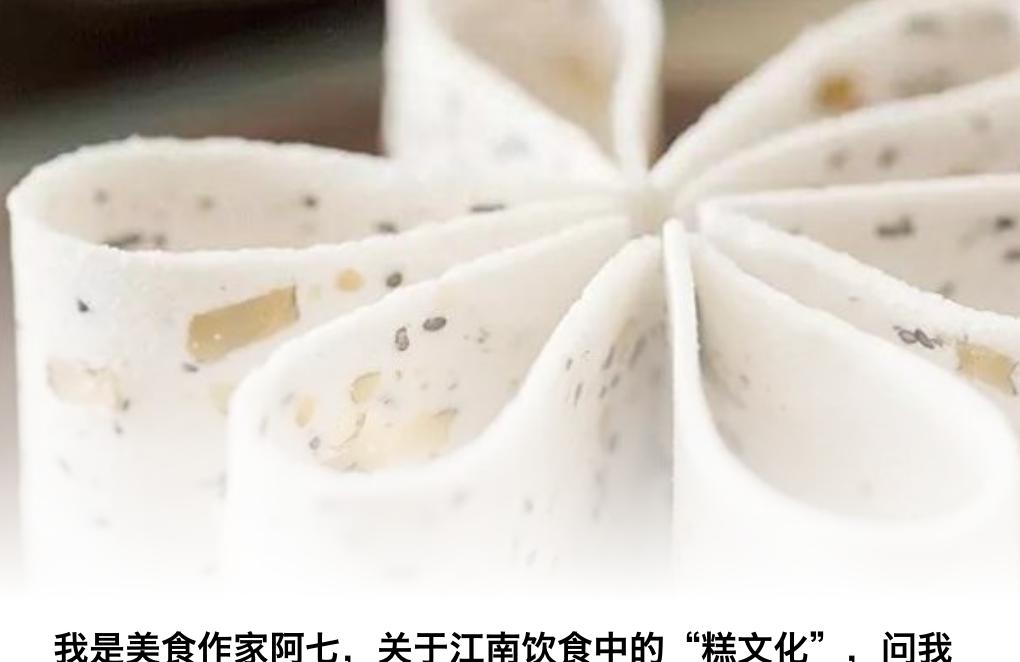The Paper asked
"If you taste it, you will know the water town of Jiangnan."
Grass warblers fly in the Qingming need to bring green groups to the green; on the ninth of September, it is indispensable to climb high without flower cakes. In the taste buds of Jiangnan people, pastries are always indispensable.
The earliest account of pastries comes from the pre-Qin ancient book "Zhou Li Tianguan", which records the "rice and rice" made after mashing rice and rice into powder. During the Zhenguan period of the Tang Dynasty, cane sugar was introduced from the western region, and with the tea style flourishing, exquisite tea pastries came into being and became the city's well food. At that time, Bai Juyi's poems contained words about pastries, such as: "Flax cakes are like learning Kyoto, the noodles are crispy and fragrant, and they are newly baked, sent to ambassador Yang who is hungry, and tasted to see them to complement Xingwu."
How did complex processes such as burning, burning, frying, steaming, puff pastry folding, and puff pastry and other complex processes developed? Are Gangnam pastries really all sweet undertones? Why did jiangnan water and soil give birth to a special pastry culture? Food writer Ah Qi asked in the surging bar, let's talk about "cake culture".

Only Gangnam Hing pastry?
@ God's Fish: Pastries have been so delicate since they were born?
Ah Qi: Pastry was still relatively rustic at the beginning, as a product of rice farming, its earliest function was to be fruity.
The pre-Qin records that the "rice bait powder" made after the rice and millet were mashed into powder did not have any fancy production techniques, just food. In the Spring and Autumn Warring States, carrots were added to pastries as a sweetener, which slowly gave it some personality. But what really made the pastries exquisite was in the Song Dynasty. The royal family moved south, folk snacks were favored by the court, and then sought after by the literati, and the natural style went up. Dignitaries and literati eat cakes not for the sake of satiety, so pastries began to develop in the direction of fine elegance. Whether it is the selection of materials or knife techniques, it has been greatly improved, making the pastry become "the reason why tea drinking is enjoyable, and the number of wine and food is to be enjoyed".
@Frajka: Is there a connection between cake culture and the common consumption of rice in the south?
Ah Qi: Yes, glutinous rice is the main raw material for pastry making, and Jiangnan, which is full of water networks and long and long rivers, is very suitable for rice growth. In the farming culture, the formation of food customs is closely related to the geographical climate, coupled with the richness of Jiangnan since ancient times, for pastries, not only require the taste of food, but also have the beauty of ornamentation and the blessing of mouth color, which is to gradually form a "cake culture".
In the north, there is mostly wheat, so the pasta is more abundant. Northern rice cakes mainly have two kinds of steaming and frying, both of which are sweet, such as the northern red date white rice cake and the hundred fruit rice cake; in addition to steaming and frying, there are still slices of stir-frying and soup boiling, and the taste is sweet and salty.
Gangnam pastries are all sweet?
@ Zifei Fish: In addition to sweet pastries, what other flavors does Jiangnan have?
Ah Qi: Jiangnan pastries are mainly sweet, but there are also salty and fresh, such as Su-style boat points, there are ham, green onion oil, chicken and other salty fillings. In addition, compound taste is also very common, such as double brewing dumplings, both bean paste sweet, but also with fermented wine aroma; Yangzhou and Zhenjiang pastries, mainly black hemp, preserves, sesame oil, hemp flavor is prominent.
@ Ship open: When I was a child, I went to the ancient town to eat a mustard cake, and I still remember it. This kind of pastry made from plants in the water can really be raised by the water and soil of Jiangnan.
Ah Qi: Qishi is one of the eight immortals of Jiangnan Water, the most famous is to belong to the Southern Qi produced in Suzhou, the best taste, the size is also large, the glutinous and delicious, the food can be raw. The workmanship of the cake is very elaborate, and the ratio of the good or bad of the cake and the glutinous rice flour directly affects the sweet taste of the pastry. If you have the opportunity, you must try fresh mustard, which is often said by Jiangsu and Zhejiang people to eat chicken head rice, which can only be eaten in a short month a year, fragrant and soft, and the teeth are sweet.
@thismoment: We all use cloud cakes to worship our ancestors for the New Year here, which means to rise step by step. Rice cakes do not know where the customs are?
Ah Qi: The ancestors who use cloud cakes to worship are mostly in Jiangsu and Zhejiang, but in fact, the pastries sacrificed are not fixed to a certain category, and most of them are determined according to local food customs.
Cake maker "high" also, New Year's eve eating rice cake means "high every year", that is, the beautiful meaning of getting better and better every year. In addition to honoring the ancestors, there is also the expectation of receiving protection, and it is better to sacrifice the gods with rice cakes and to offer ancestors. There are such food customs in the north and south, such as osmanthus sugar rice cake in Suzhou, water mill rice cake in Ningbo, and steamed rice cake for sacrifice during the Spring Festival in Hebei.
(Screenshot of "China on the Tip of the Tongue")
Editor-in-Charge: Xinyu Zhao
Proofreader: Ding Xiao